
I’m Ichiyo and I represent “Ichiyo’s Japanese Online Lesson.”
My job is teaching Japanese to non-native Japanese learners.
In the romaji of “ら-row,” English “r” is used. However, there is no English “R” sound and pronunciation in Japanese. We have seen many non-native Japanese learners who cannot pronounce them correctly. Please learn how to pronounce the “ら-row” through this page.
| ひらがな (Hiragana) | カタカナ (Katakana) | ローマ字 (Romaji) | 国際音声記号 (IPA) |
| ら | ラ | ra | ɾa |
| り | リ | ri | ɾʲi |
| る | ル | ru | ɾɯ |
| れ | レ | re | ɾe |
| ろ | ロ | ro | ɾo |
IPA = International Phonetic Alphabet
The IPA “ɾ” looks like the English “r.” However, they are different.
Places of Articulation
Before we get to the main point, please learn each part’s name to understand our explanations.
| Vocal Tract Cross-Sectional View | Tongue |
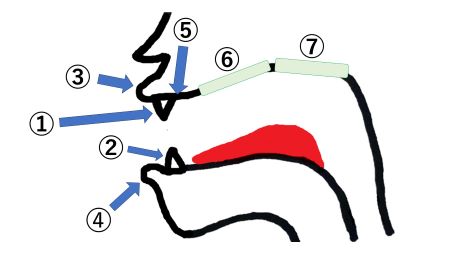 | 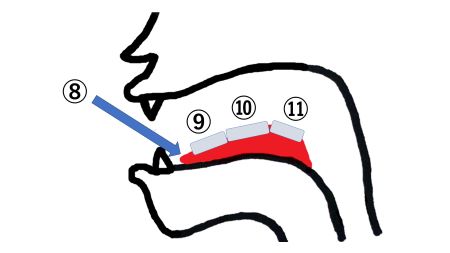 |
| ① upper teeth ② lower teeth ③ upper lip ➃ lower lip ⑤ alveolar ridge ⑥ hard palate ⑦ soft palate | ⑧ tip ⑨ front ⑩ bridge ⑪ back |
English “R,” “L” and “ら-Row”
It is often said that “ら-row” is similar to the pronunciation of the English “L.” However, the pronunciation between “L” and “ら-row” is different. Moreover, many learners pronounce “ら-row” by moving their tongues in the same way as the English “R.”
| English “R” | English “L” |
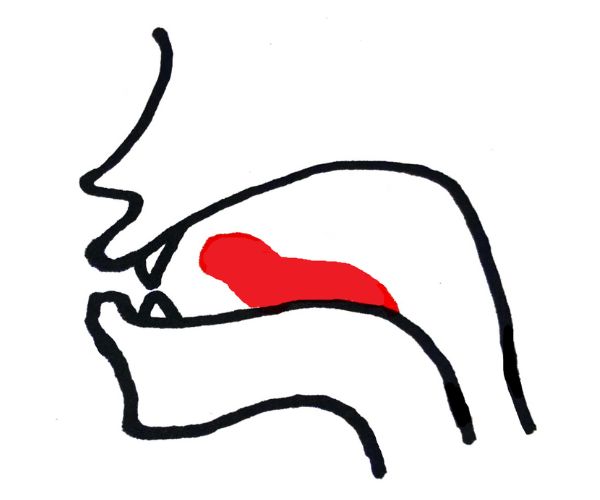 | 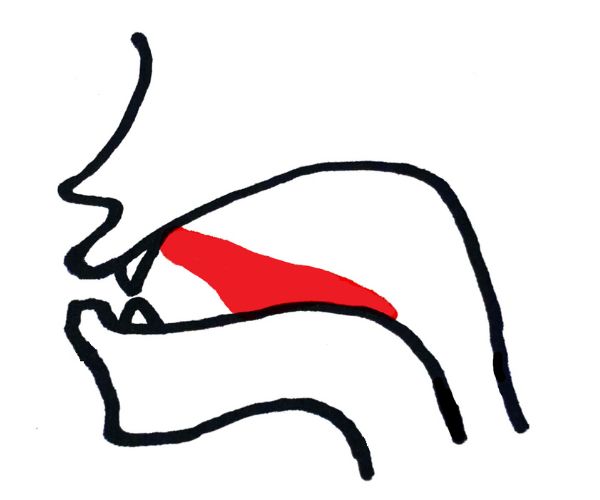 |
| Consonants of ら・る・れ・ろ | Consonant of り |
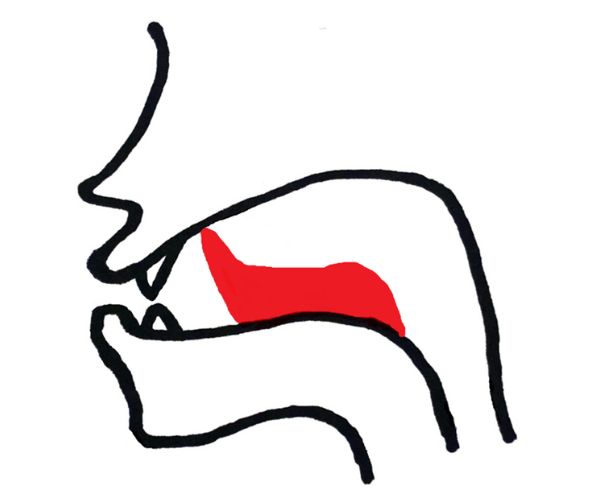 | 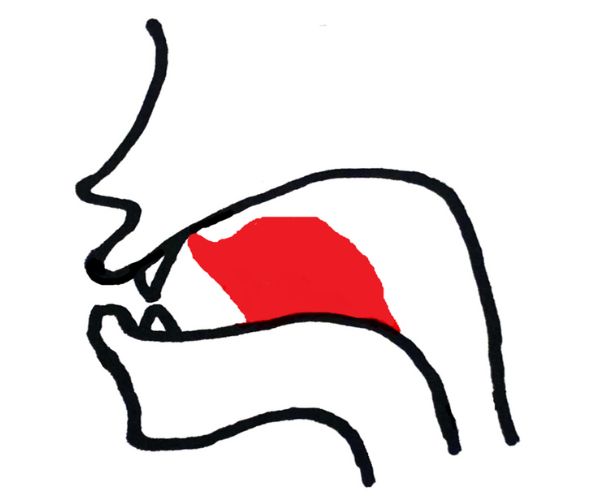 |
Please pay attention to these tongue positions. The pronunciations of the consonants of “ら-row” are classified as “flap.” The tongue form of「り」is different from the other characters of “ら-row.”
English “R”
The tip of our tongue doesn’t touch anywhere and we pull the tongue straight back.
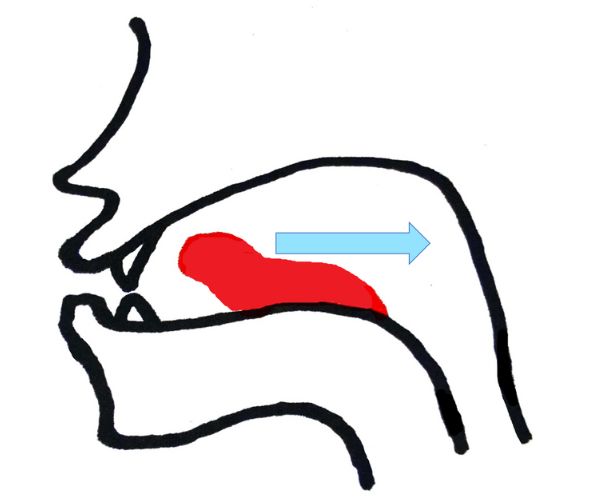
English “L”
The tip of our tongue touches the root of our upper teeth or alveolar ridge.

When you pronounce “ら-row,” please do not move your tongue like when you pronounce the English “R” and “L.”
How to pronounce “ら-Row”
We will teach you the details of “ら-row” in this section.
Rhythm: We pronounce each character in a beat.
Pronunciation of「ら」(Romaji: ra, IPA: ɾa)
ら = Consonant “ɾ” + Vowel “a”
| ① Consonant “ɾ” | ||
 | Tongue: The tip of our tongue touches the hard palate. | |
↓ Flap your tongue and move your mouth, make the sound.
| ② Vowel “a” | |
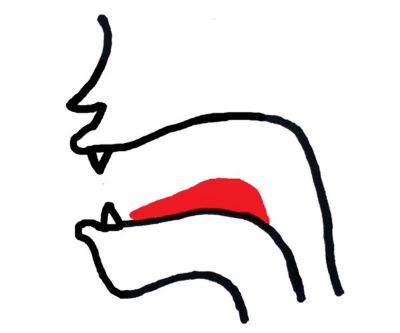 | Tongue: We place our tongue in the lowest position. |
 | Mouth and Lips: We open our mouths wide. |
Pronunciation of「り」(Romaji: ri, IPA: ɾʲi)
り = Consonant “ɾʲ” + Vowel “i”
| ① Consonant “ɾʲ” | ||
 | Tip of tongue: It touches the upper alveolar ridge. Bridge of tongue: It is closer to the hard palate. | |
↓ Flap your tongue and move your mouth, make the sound.
| ② Vowel “i” | |
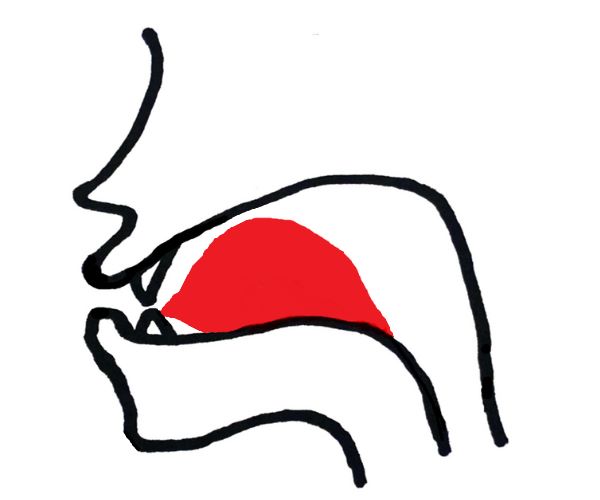 | Tip of tongue: It touches the top and back of our upper teeth. Bridge of tongue: It is also closer to the hard palate. |
 | Mouth and Lips: We raise the corners of our mouth like when we grit our teeth. |
Pronunciation of「る」(Romaji: ru, IPA: ɾɯ)
る = Consonant “ɾ” + Vowel “ɯ”
There are two types of pronunciation of「う」.
The details are here: Pronunciation of Japanese Vowels あ、い、う、え、お
| ① Consonant “ɾ” | ||
 | Tongue: The tip of our tongue touches the hard palate. | |
↓ Flap your tongue and move your mouth, make the sound.
| ② Vowel “ɯ” | |
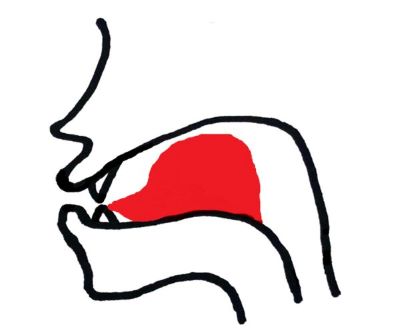 | Tip of tongue: It touches the top and back of our upper teeth. Back of tongue: It is closer to the soft palate. However, compared with the tongue position of「い」, there is much space between the tongue and palates. |
 | Mouth and Lips: We pucker our mouth a little. |
Pronunciation of「れ」(Romaji: re, IPA: ɾe)
れ = Consonant “ɾ” + Vowel “e”
| ① Consonant “ɾ” | ||
 | Tongue: The tip of our tongue touches the hard palate. | |
↓ Flap your tongue and move your mouth, make the sound.
| ② Vowel “e” | |
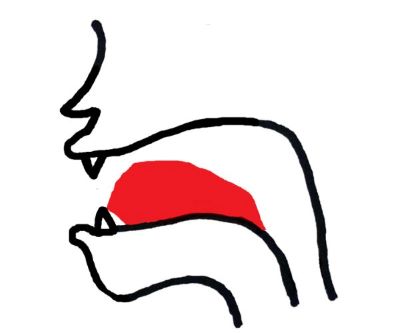 | Tip of tongue: It touches the top and back of our upper teeth. Back of tongue: It is closer to the hard palate. However, compared with the tongue position of「い」, there is much space between the tongue and hard palate. |
 | Mouth and Lips: We open our mouth less wider than when we pronounce「あ」. |
Pronunciation of「ろ」(Romaji: ro, IPA: ɾo)
ろ = Consonant “ɾ” + Vowel “o”
| ① Consonant “ɾ” | ||
 | Tongue: The tip of our tongue touches the hard palate. | |
↓ Flap your tongue and move your mouth, make the sound.
| ② Vowel “o” | |
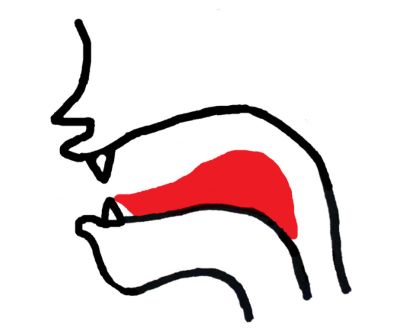 | Front Tongue: It is slightly away from the gums of our lower teeth. Back of Tongue: It is closer to the soft palate. |
 | Mouth and Lips: We round our lips. |
To Pronounce “ら-Row” Correctly
There are many non-native learners who cannot pronounce “ら-row” correctly. It is said that it is difficult to listen to and pronounce a second language when our first language does not have the same sound as the second language. Therefore, they do not notice that they are pronouncing incorrect Japanese.
Therefore, we provide lessons and services to improve your Japanese. If you take our “Daily Japanese Mail Support,” we will check and analyze your Japanese. Before you acquire incorrect Japanese, please show us your Japanese.



